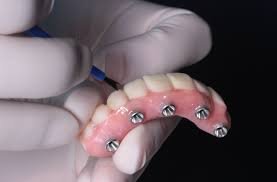
Compare and Contrast Eustress with Distress
Introduction: Stress Isn’t Always a Bad Thing
When most people hear the word “stress,” they associate it with something negative—tight deadlines, emotional breakdowns, anxiety, or sleepless nights. But stress isn’t inherently bad. In fact, some forms of stress can motivate us, sharpen our focus, and enhance our performance. This “positive stress” is known as eustress, while the harmful, overwhelming kind is called distress. Understanding the difference between eustress and distress is essential for managing mental health, productivity, and emotional resilience. In this article, we’ll explore how these two forms of stress differ, how they affect the body and mind, and how to recognize them in your own life.
What Is Eustress?
Eustress is a type of stress that is beneficial, motivating, and short-term. It typically arises in situations that are challenging but within our ability to handle. Eustress pushes you to grow, take action, and rise to the occasion without feeling overwhelmed. It often accompanies events like:
- Preparing for a big presentation
- Competing in a sports tournament
- Going on a first date
- Starting a new job or project
- Planning a wedding or vacation
In all of these scenarios, there’s pressure—but it’s energizing rather than paralyzing. Eustress enhances performance by increasing adrenaline in a controlled way, boosting confidence, and making you feel engaged.
What Is Distress?
In contrast, distress is the form of stress we typically associate with negative outcomes and chronic emotional strain. It arises when demands exceed your perceived ability to cope. Distress is long-term, draining, and can lead to physical and psychological problems if not managed. Common sources of distress include:
- Job insecurity or toxic workplace environments
- Relationship conflicts
- Financial hardship
- Chronic illness
- Grief or trauma
Unlike eustress, distress depletes energy, disrupts sleep, increases irritability, and can contribute to conditions like anxiety, depression, and cardiovascular disease. It triggers the fight-or-flight response, but without resolution, it becomes toxic over time.
Key Differences Between Eustress and Distress
While both eustress and distress fall under the umbrella of stress, their impact is drastically different. Here’s a breakdown of the main distinctions:
| Feature | Eustress | Distress |
|---|---|---|
| Emotional Outcome | Positive, motivating | Negative, overwhelming |
| Duration | Short-term | Can be short- or long-term |
| Physical Symptoms | Increased energy, alertness | Fatigue, headaches, insomnia |
| Mental State | Excitement, focus | Anxiety, confusion, hopelessness |
| Productivity Impact | Enhances performance | Reduces performance and focus |
| Health Effects | Encourages growth and resilience | May lead to illness or burnout |
Understanding these differences is key to managing your stress effectively and developing emotional intelligence.
Similarities Between Eustress and Distress
Despite their opposing outcomes, eustress and distress share a few key similarities:
- Both are physiological responses involving cortisol and adrenaline
- Both originate from perceived challenges or threats
- Both can affect sleep, mood, and behavior depending on intensity
- Both trigger the sympathetic nervous system, preparing the body for action
- Both forms of stress can be subjective—what’s eustress to one person might be distress to another
It’s important to note that stress is not binary; it exists on a spectrum. The same situation can shift from eustress to distress depending on preparation, mindset, or external support.
The Role of Perception in Stress Response
One of the most fascinating aspects of stress is that it is deeply shaped by perception. Two individuals facing the same deadline may have entirely different experiences: one may thrive under the pressure (eustress), while the other feels completely overwhelmed (distress). Factors that influence your stress perception include:
- Personality traits (e.g., optimism, resilience)
- Coping mechanisms and past experiences
- Support systems and environmental conditions
- Health and well-being status
- Sleep, nutrition, and exercise habits
This is why stress management strategies often focus on reframing thoughts, enhancing coping skills, and building resilience. You can learn more about stress reappraisal on Harvard Health’s stress overview.
How to Turn Distress into Eustress
Transforming distress into eustress isn’t always possible, but certain strategies can shift your mindset and increase your ability to cope. Here’s how:
- Break tasks into manageable steps to reduce overwhelm
- Reframe challenges as opportunities for growth
- Set realistic goals and celebrate small wins
- Practice mindfulness and deep breathing to calm the nervous system
- Seek social support and professional guidance when needed
- Stay physically active—exercise is proven to reduce distress
- Develop emotional regulation skills through journaling or therapy
By proactively managing stressors, you can often convert negative energy into positive momentum. These skills are central to mental fitness and emotional intelligence, and are taught in many wellness coaching programs such as those found at MindTools.
Examples of Eustress and Distress in Daily Life
Here are a few real-life examples to illustrate the contrast between eustress and distress:
Example 1: Job Interview
- Eustress: You feel nervous but excited, prepare thoroughly, and see it as a step toward your goals
- Distress: You feel panicked, lose sleep, and fear rejection to the point of inaction
Example 2: Academic Exams
- Eustress: Motivates you to study, organize your notes, and focus
- Distress: Triggers procrastination, self-doubt, and performance anxiety
Example 3: Public Speaking
- Eustress: Provides an adrenaline boost that sharpens your delivery
- Distress: Causes a panic attack or avoidance behavior
These examples highlight the subjective nature of stress and the importance of mindset and preparation.
When to Seek Help for Distress
While occasional stress is normal, chronic distress is not. If you experience:
- Persistent anxiety or depression
- Physical symptoms like headaches, chest pain, or fatigue
- Sleep disturbances
- Loss of interest in daily activities
- Difficulty concentrating
- Feelings of hopelessness or isolation
It’s time to talk to a professional. Therapists, counselors, and mental health coaches can help you identify sources of distress and build tools to manage it. Left untreated, chronic stress can contribute to serious health conditions, including high blood pressure, heart disease, and burnout.
Conclusion: Recognize, Respond, and Rebalance
Stress is part of life—but how you experience and respond to it makes all the difference. Eustress can energize you, boost your confidence, and improve your performance. Distress, on the other hand, can sap your energy, damage your health, and block progress. The key lies in recognizing which type of stress you’re experiencing and learning how to respond effectively. By understanding the difference between eustress and distress, and taking proactive steps to manage your stress response, you can live a healthier, more balanced, and empowered life.






